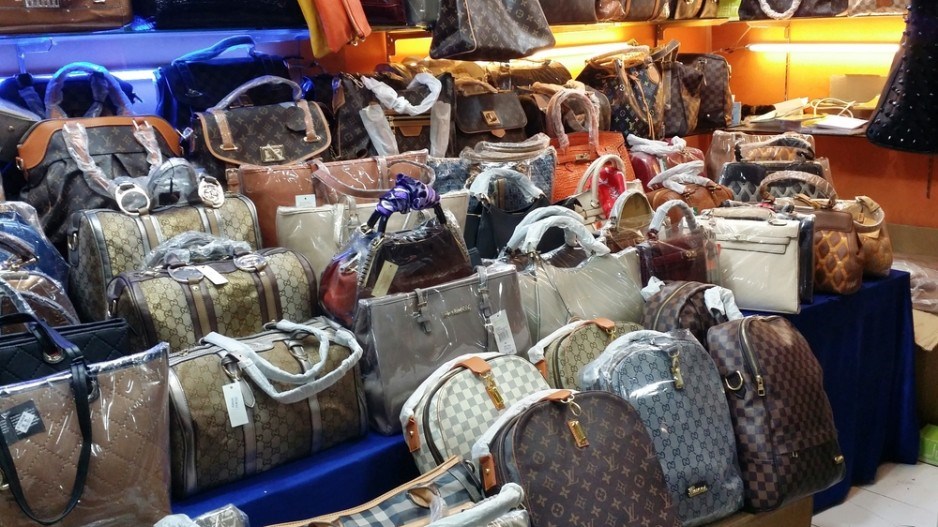We’ve all seen them: Louis Vuitton, Prada, Nike and even Lululemon knock-offs, some of which look so authentic it’s difficult for even the most discerning eye to be able to tell the difference between what’s real and what’s fake.
Despite the fact that the availability of these goods can be seen as diluting the brands of luxury goods makers, there is a plus side for the consumer, according to a new study by the University of British Columbia’s Sauder school of business.
“When counterfeiters start fooling too many customers, authentic brands step up their design game,” said study author and Sauder associate producer Yi Qian. “The authentic producers will make the most of any cost advantages they have to produce more highly differentiated goods shoppers can easily identify as the real thing.
“In fashion this can mean an increased focus on aesthetics.”
The prevalence of these imitation goods has increased over the past 12 years due to changing enforcement policies in China, the report found. The study looked at 31 designer brands over this period to study the effects of these changing rules.
What the researchers found was that increasing numbers of fakes for any given brand pushed the authentic producers to use better quality materials, leading to a better-looking product.
While some say imitation is the sincerest form of flattery, not all industries benefit from copied products. For example, the study found counterfeit pharmaceuticals force authentic drug makers to spend money on changing pill aesthetics – a cost that ultimately gets passed on to the consumer.
“Under certain conditions, [counterfeit pharmaceuticals] could drive the authentic products out of the market if consumers are too wary of mistakenly buying a knock-off,” UBC said in a media release.
Qian said the results of the study don’t mean counterfeiting is a positive thing overall. She said the way enforcement is carried out should change.
“We know knock-offs are out there,” she said. “Yet sometimes, the most efficient solution is to let the market’s invisible hand do its own regulation, as it can lead to better products.”
For those who are concerned about mistakenly buying counterfeit goods, there are often ways to spot the fakes. LV logos that land on bag seams, Nike Air Jordans with “a fatter jumpman” and sloppy “Ohm” logos on Lululemon hoodies are dead giveaways for those in the know.
There are many resources out there to separate the fakes from the real thing. For example, YouTube has many videos with experts discussing ways to notice knock-offs.




